Khuzestan, a geographic region in southwestern Iran, lying at the head of the Persian Gulf and bordering Iraq on the west. It is notable for its oil resources. The area that is now Khuzestan was settled about 6000 BC by a people with affinities to the Sumerians, who came from the Zagros Mountains region. Khuzestan Province Due to its diverse nature, different ethnic and religious cultures have become one of the most important tourist areas in the country, which has attracted the attention of tourists.
In terms of having different subcultures, Khuzestan province is the most diverse in Iran. Bakhtiaris, native Arabs, Persians, Lurs and etc reside in Khuzestan. Due to its ancient history and is the cradle of civilization, has many historical monuments like Chogha Zanbil, which is registered in the list of UNESCO World Heritage is only one of these precious monuments. Also, the Shushtar Hydraulic System which is world renowned and is also registered by UNESCO.
Besides the rich cultural sites in Khuzestan, there are some other amazing things to do for adventure enthusiasts. From Living with Bakhtiari nomads and experience their lifestyle and Boat trip in Shadegan lagoon while doing bird watching, to visiting Sarakhieh village known as Veniz of Iran and visiting the local market, where you can buy traditional handicrafts as souvenirs, enjoy flavorful and exotic Persian cuisine and the best Iran dates.
Hot to get to Khuzestan Province
Khuzestan province is located in the southwest of Iran with central of Ahvaz. Ahvaz International Airport offers flights to domestic destinations as well as regional international destinations, such as Dubai, Istanbul and Kuwait. There are regular domestic flights from all well-known Iran cities to Ahvaz every day. The flight time from Ahvaz to Tehran is 50 minutes.

For a road trip, it is 780 km from Tehran to Ahvaz for a nonstop drive. It takes about eight hours. Some other famous nearby cities are Isfahan, Shiraz and Kermanshah which the distance is respectively 512km, 520km and 495km. There are plenty of buses at cheap prices from all mentioned cities to Ahvaz every day as well.

Best time to visit Khuzestan
The central and southwestern parts of the province are warm and somewhat sunny in the first six months of the year with hot summer days reaching 50 degrees Celsius. But in the second half of the year and Nowruz the weather is very good and only in the middle of winter the weather gets a little colder. Therefore, in the travel guide to Khuzestan, we suggest you choose cool seasons.
Khuzestan Sightseeing and Attractions
Ahvaz
Ahvaz is the capital of Khuzestan province and the second hottest city of Iran. The city is popular because of its bridges, beautiful nights and warmhearted people. During 8-year imposed war between Iran and Iraq, the city had been damaged a lot that the effects of them are still noticeable. Ahvaz is one of the most important industrial cities of Iran and most of the parent companies of the country are in this city and also 51% of petroleum of Iranian National Oli Company is produced there.
Chogha Zanbil Ziggurat, seven hills museum

Most travellers who visit Khuzestan do so for the Elamite and Aechemian monuments at Susa, Choga Zanbil and Shushtar. All on the Unesco World Heritage List. the sunset at the impressive ziggurat of Choga Zanbil is beautiful. It is one of the few remaining ziggurats, built in the 13th century BC. The town of Shushtar is teeming with monuments, most of them related to the famous irrigation system that was built here in the 5th century B.C. and expanded and refined over the centuries. Most impressive is the hydraulic system, where water mills are driven to grind grain and rice.
Shushtar Historical Hydraulic System
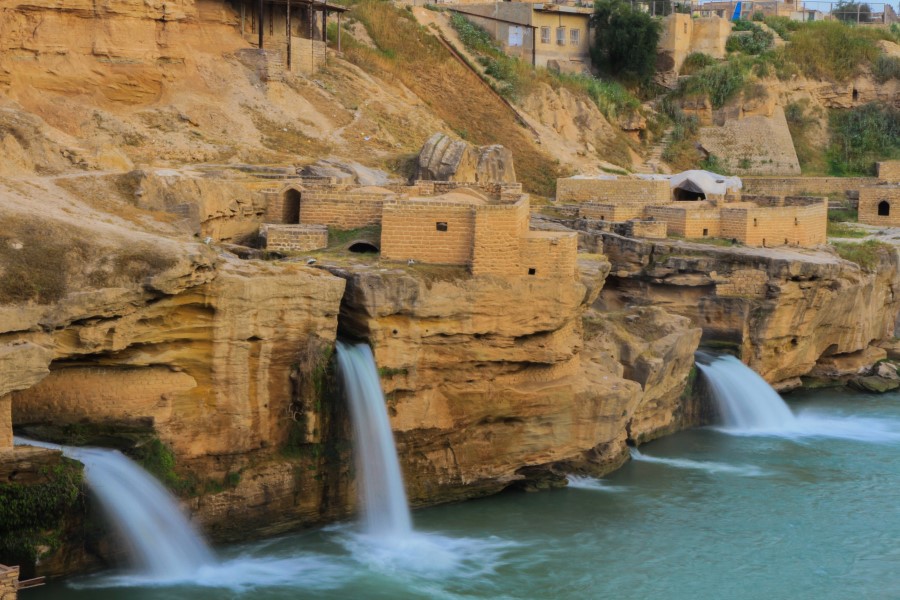
Shushtar Historical Hydraulic System is a complex irrigation system of the island city Shushtar from the Sassanid era. It consists of 13 dams, bridges, canals and structures which work together as a hydraulic system.
Located in Iran’s Khuzestan Province. It was registered on UNESCO’s list of World Heritage Sites in 2009 and is Iran’s 10th cultural heritage site to be registered on the United Nations.
Susa, The Demorgan Museum, Apadana Palace, Tomb of the prophet Daniel
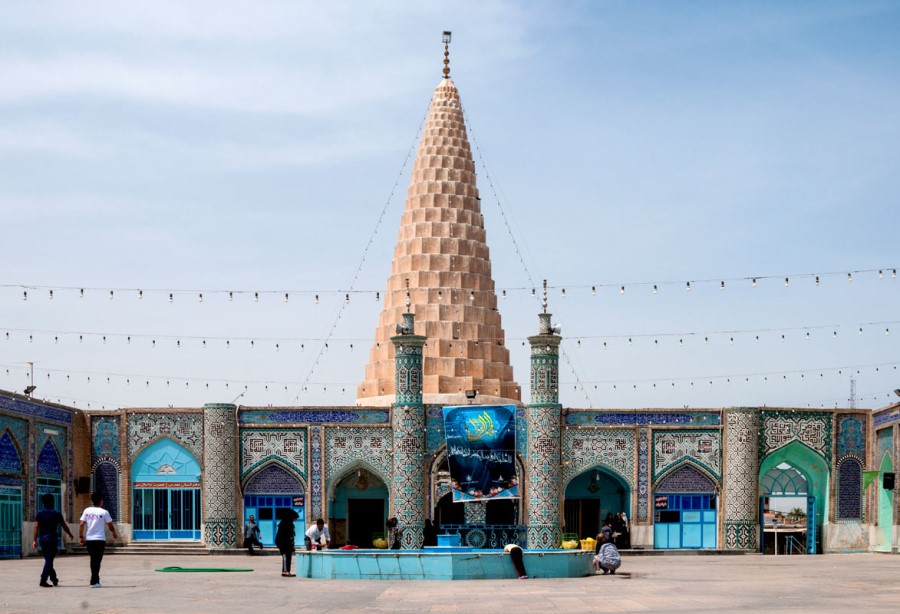
Susa is an ancient city in the lower Zagros Mountains about 250 km (160 mi) east of the Tigris, between the Karkheh and Dez Rivers in Iran. One of the most important cities of the Ancient Near East, Susa served as the capital of Elam and the Achaemenid Empire, and remained a strategic centre during the Parthian and Sasanian periods.
The site currently consists of three archaeological mounds, covering an area of around one square kilometre. The modern Iranian town of Shush is located on the site of ancient Susa. Shush is identified as Shushan, mentioned in the Book of Esther and other Biblical books.

Sarakhieh Village; The Venice of Iran
Sarakhieh is located in the south of Darkhoveyn-Shadegan road in Khuzestan province, south-western Iran. It lies in the waters of Shadegan International Wetland, the largest series of ponds in Iran with an area of 400,000 hectares, registered globally as an important natural source in the region and the world.

The attractions of Sarakhieh are Boat Riding and fishing in Shadegan Wetland as well as
Animal Watching like Buffalos and Migrating birds like flamingos, herons, storks, wild geese and ducks.
Khuzestan Things to do
Hoorolazim wetland
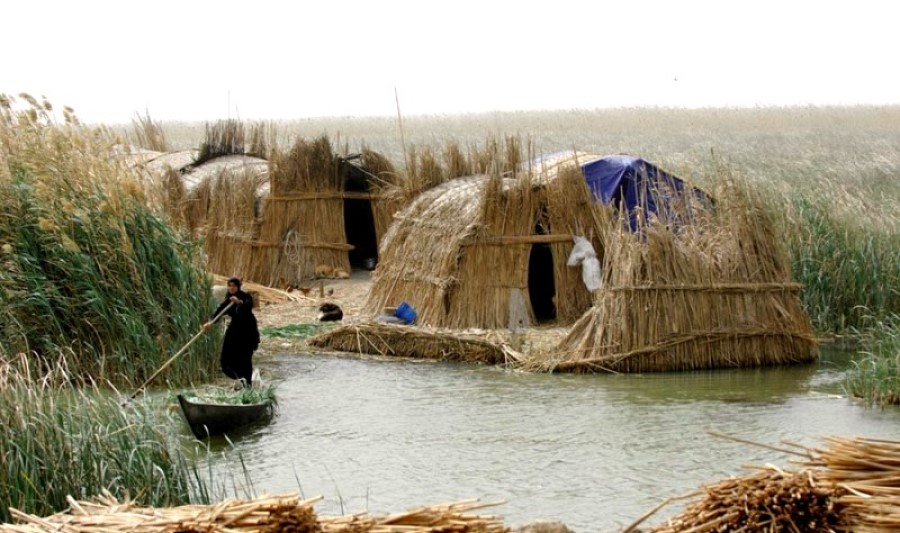
The length of Hoor-ol-Azim wetland is about 100 km. and its width is between 15-75 km. It is limited from the west by the Tigris River and from the east by the flat plains of Iran. Throughout, the Hoor is covered by reeds. The depth of the water towards the sides is shallow while in the center it is more than 7 m. Special canoes can be used in this wetland. The nature of Hoor and especially the surrounding inhabitants are of anthropological interest.
Kool Khersoon Valley
Kool Khersoon is one of the most amazing natural attractions of Dezful city which is located in the north of Dezful and Shahyun’s district. The word ” kool” means “a very narrow Valley” in its local meaning. On its walls, so many plants and trees including: charming Pomegranate and Ziziphus trees could be seen. There are two ways to go to the valley.
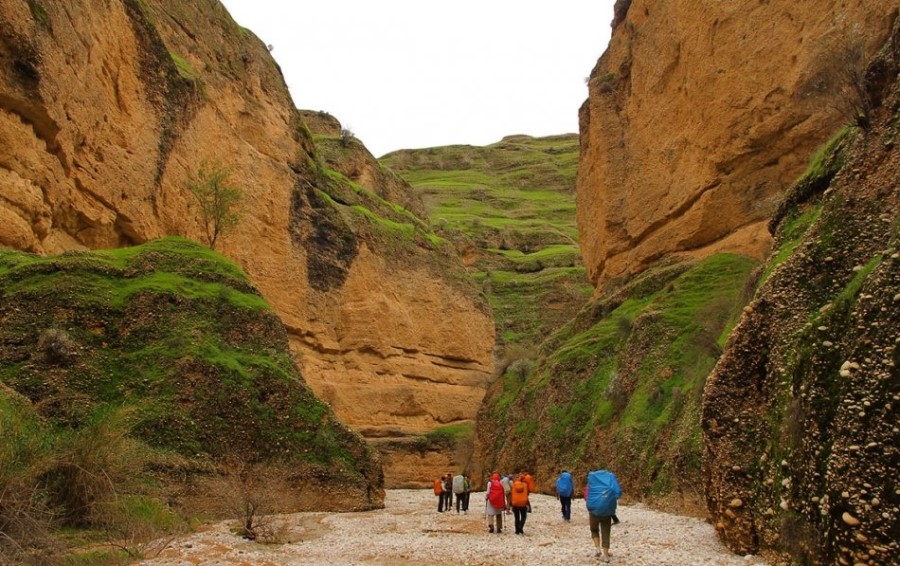
Kool Khersoon is considered as an attractive part even in the hot days of summer, as the result of its abrupt temperature decrease to even below 20 degrees, in some narrow parts of its valleys that the walls get together on the top, don’t allow the sunlight to reach the lower parts. As its unique nature and its special ways to go, for enjoying more, it would be recommended to coordinate with the local tours of Dezful city or ask for guide of the mountain climbing committee leaders of Dezful.
Bakhtiari Nomad

Khuzestan is also the winter residence of the Bakhtiari nomads in the Koohrang mountains. They live in the green hills between Lali and Majed-e Soleimani. A surprisingly beautiful area, everywhere whimsical rock formations, green grasslands and in the background the snowy peaks of the Zagros Mountains.

Unlike in the summer months, they don’t live in the characteristic tents now, but in stone houses in small villages, Twenty years ago, everyone was still living in tents, but that way of life has disappeared. People are more settled, the children go to school here. In the spring a number of families go to the high pastures near Chelgerd, in the summer months almost everyone goes there. But also here in their houses it is definitely worthwhile to meet the Bakhtiari and learn more about their culture.
Mozif
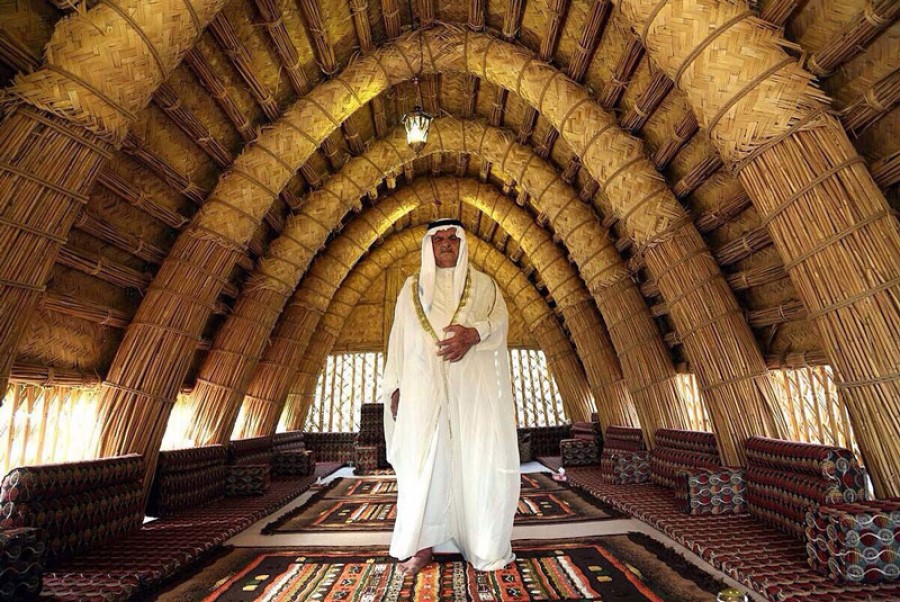
The mozif occupies an important position within the culture of the Arabs. It is a guesthouse, made of reed with a characteristic round shape. Guests may stay here for a minimum of three days at the host’s expense. They were often used as a kind of caravanserai for travellers. The mozifs are also a kind of community houses, where the elders of the village gathered to discuss important matters. The mozifs have no door, everyone is welcome. Through a low entrance you can enter, so you always have to bend over and show respect. The rituals of coffee and tea gifts in the mozif are central. Unfortunately, most of the mozifs have disappeared. There are now a few mozifs that were built to receive ‘new’ guests, i.e. tourists. Because of this, the culture is not completely lost and travellers can experience what it is like to sleep in a mozif. There is such a place in Bardiye, just outside Ahvaz. There is such a place on the island of Minoo, near Abadan.
Khuzestan Hotels
Tabib Traditional hotel, Shushtar
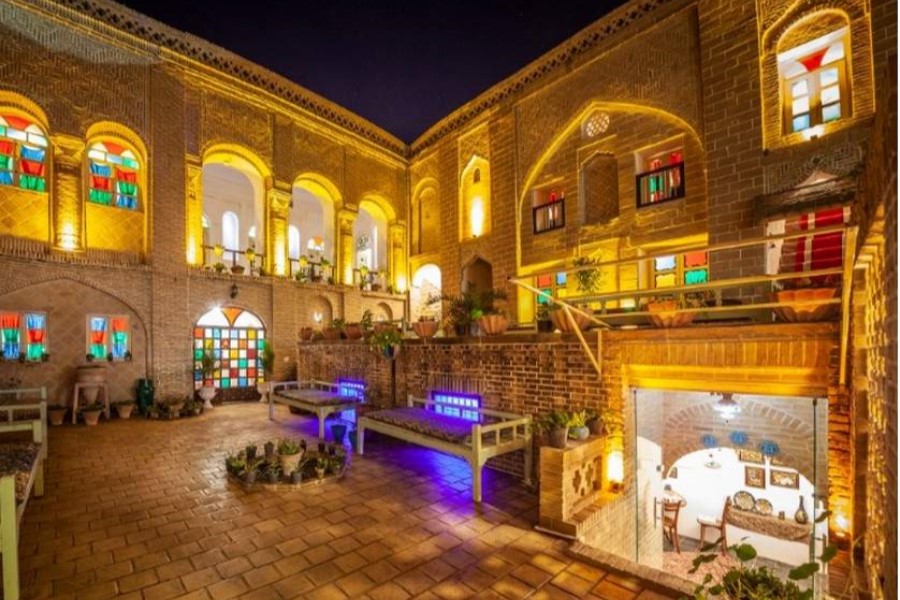
Tabib Traditional Hotel was built during the Qajar era (1789-1925) in Shushtar, a city with an ancient history and civilization famous for being the capital of the world’s water structures.
Hotel with taxi service, laundry service, delicious breakfast, high speed internet and transfer from the hotel to the airport provided for the comfort of travelers for a memorable stay.
The hotel has good access to the region’s natural and historical attractions such as world record of Shushtar water structures, which is a relic of the Achaemenid era.
Ahvaz Pars hotel
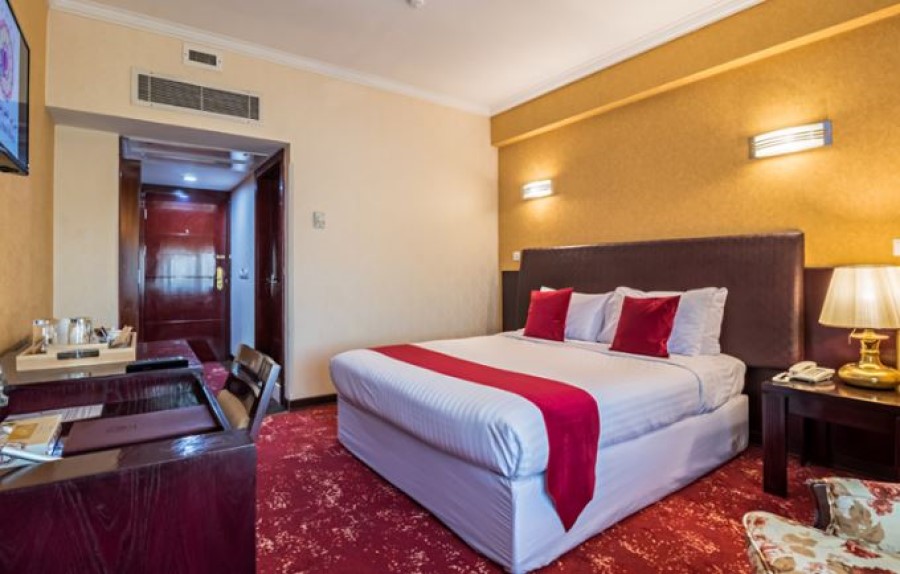
This 5-star complex has an area of more than 101 thousand square meters and started its work in 1347, although several complete renovations have been done in it, the last time being in 1393. The hotel has 5 floors and 136 accommodation units and has a coffee shop, an outdoor swimming pool, a summer restaurant and a conference room. One of the advantages of Pars Hotel in Ahvaz, which welcomes the guests of this hotel, is its proximity to the beautiful Karun River and Pol-e Sefid, which are among the most important sights of Ahvaz.
Food and Restaurant in Khuzestan
Ghaliyeh Mahi

Ghalieh Mahi is one of the most famous Iranian stews. In cooking this dish, special vegetables (coriander and fenugreek), Indian spices, spices and southern fish are used. In most southern cities, grilled fish are well cooked and the type of fish used in each city for cooking is usually different. In Ahvaz, in addition to fish such as ewes and otters, they sometimes fall into shrimp troughs.
Falafel

Falafel is a dry food that belongs to Lebanon but is known as Abadan in Iran. The main ingredient of this dish is soaked or half-cooked chickpeas, which are made of baguette dough, onions and spices, and fried, and are marketed as sandwiches. Of course, this food has become so popular that it is cooked all over the country today but eating it in Khuzestan, especially Abadan has a different atmosphere.
Emperatour Restaurant in Ahvaz for seafood and Mostowfi House in Shushtar for middle eastern food are some of the good recommendations for tasting Khuzestan local dishes.

